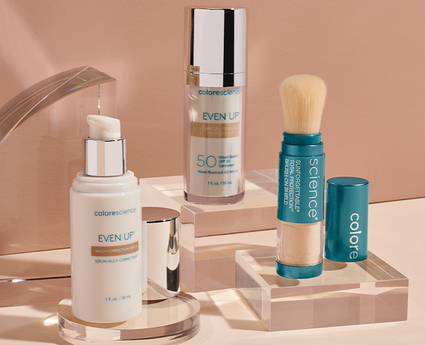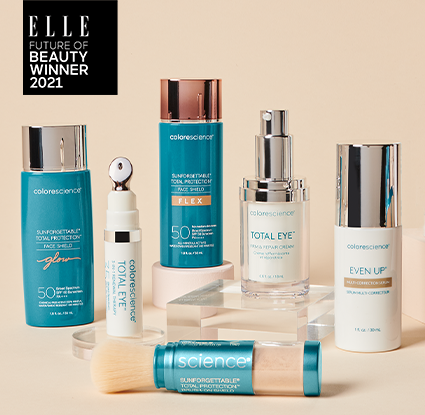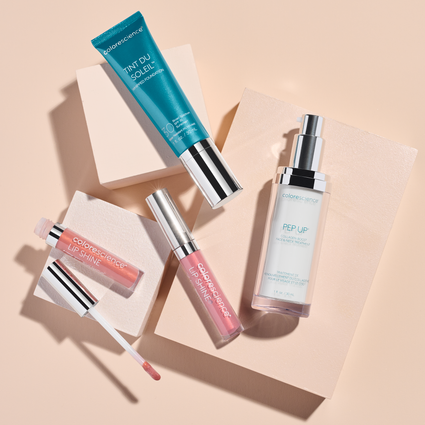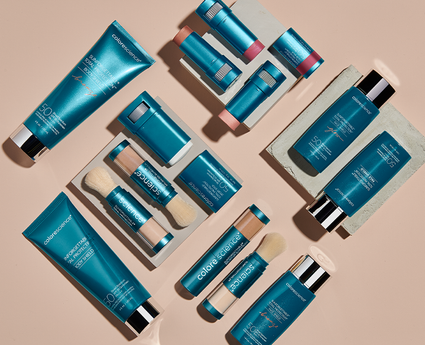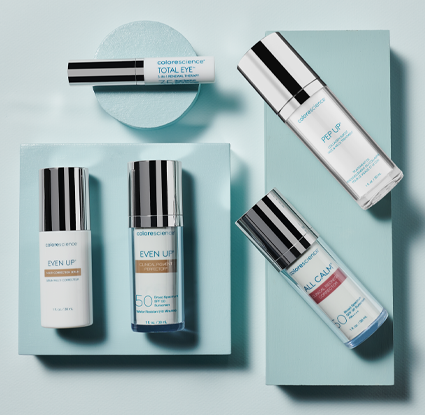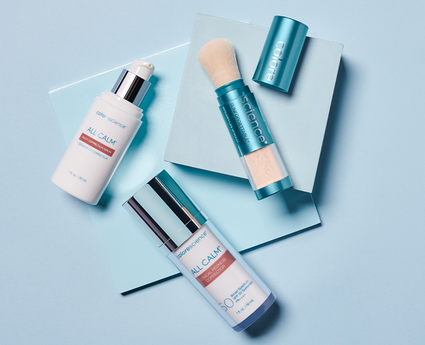Reef Safe Sunscreen: Eco-Friendly Reef Safe Sunscreen Ingredients
Planning a trip to the Hawaiian Islands? Better pack carefully. Without reef safe* sunscreen, your fun in the sun could be restricted to the sand. Hawaii has recently approved legislation that puts a ban on any chemical sunscreen harmful to marine life, demanding that only eco-friendly sunscreen goes into its waters. The consequences of chemical sunscreen are long reaching however, implicating all bodies of water—in addition to our own biology.
Fortunately, it’s possible to protect your skin while also protecting the ocean, so whether you want to plan for a vacation or advocate for the environment at large, keep reading to learn the ins and outs of coral reef safe* sunscreen.
What Type of Sunscreen is Eco-Friendly?
Before delving into the complexities of sunscreen and the ways in which it can harm our ecosystem, we first need to ask, “How does sunscreen work?” The answer is twofold: chemical sunscreen and mineral sunscreen work in different ways.
Chemical sunscreen contains carbon-based active ingredients that are intended to absorb UVA and UVB radiation upon contact with your skin. The carbon compounds catalyze a chemical reaction—hence the eponymous name—under sun exposure. During the chemical reaction, UV rays convert to heat, which is then released from the skin in order to protect it from damaging our DNA. However, the same active ingredients which are known to absorb UV rays are also known for absorbing into our skin where they then wreak havoc in our system. Worse yet, when rinsed off in the ocean, chemical sunscreen can destroy living ecosystems.
Let’s take a look at some of the common active ingredients in chemical formulas and explain why they should be avoided if you’re looking for healthy, reef-friendly sunscreen solution:
- 4-Methylbenzylidine Camphor: This UV filter can be reabsorbed into the skin and has been shown to display estrogenic effects on reproductive systems as well as strong anti-osteoporotic effects on humans and animals. It also causes coral bleaching.
- Avobenzone: Although this ingredient is the most frequently used UVA chemical filter, it’s very unstable, meaning it degrades quickly in sunlight.
- Butylparaben: Certain parabens (preservatives) such as butyl or methyl intended to increase the shelf life of sunscreen are toxic to marine life. They were originally used as a mass fish anesthetic and they also cause coral bleaching.
- Octinoxate: This chemical filter is readily absorbed by skin and is a known endocrine disruptor. Not only does it disrupt your thyroid gland (the master gland of the endocrine system), it can also causes bleaching in coral reefs.
- Octisalate: While this filter protects against UVB radiation, it also enhances the skin’s permeability. This means that if your chemical sunscreen contains harmful ingredients, it’s more likely to enter your body if Octisalate is present in the formula.
- Octocrylene: This protects against UVA and UVB rays, but it also increases the production of free radicals when exposed to sunlight.
- Oxybenzone: Due to its ability to absorb UVA and UBV rays, Oxybenzone is one of the most widely used chemical sunscreen ingredients. However, this lipophilic (or “fat-loving”) ingredient crosses over the skin barrier very easily—and within 30 minutes, is present in the urine of 96% of those who apply it. Once in our bodies, it disrupts our endocrine system and deregulates hormonal functioning. With respect to marine life, it damages DNA which may lead to developmental abnormalities and/or cancer. Moreover, it causes deformation in juvenile coral and leads to bleaching—and ultimately, death.
Coral reef has been ravaged by the global bleaching caused by chemical sunscreen ingredients, specifically Oxybenzone. Normally, corals bleach—expelling algae living in their tissues—when water is too warm, or above 81.7 Fahrenheit.

When in contact with Oxybenzone, corals will bleach at 78 degrees (a non-bleaching temperature) and it only takes a few hours for the chemical to do its damage. The coral turns white, an indicator that it’s in danger of dying, and the accompanying marine life—which thrives off its ecosystem—abandons the reef.
Octinoxate and Octocrylene have toxic effects on corals reefs, but Oxybenzone is by and far the biggest culprit, so be sure to find Oxybenzone free sunscreen in your search for reef safe* sunscreen alternatives.
When most people think of ocean pollution, they refer to the plastic waste that finds its way into our water, overlooking the estimated 14,000 tons of sunscreen which enter the world’s reefs annually, as according to the journal Archives of Environmental Contamination and Toxicology.

Although coral can survive bleaching events due to spikes in water temperatures, the toxic pollutants in chemical sunscreen are placing reefs under increased stress and jeopardizing their mortality. From Hawaii to Guam, Australia to the Caribbean, these diverse ecosystems have been dramatically suffering.
Scientists aren’t sure how long it may take them to recover, or what they could potentially look like afterward, making the need for coral reef safe* sunscreen all the more pressing.
You don’t need to go swimming on a tropical vacation to contribute to the environmental destruction, however. Aerosol dispensers spew chemicals all across the sand where the tide then scoops them up and carries them into the water, whether or not you swim.
Even if you aren’t on vacation, your shower could rinse off yesterday’s application of sunscreen where it could potentially drain out to sea. Since Oxybenzone is detected in urine, the same concept applies when flushing the toilet.
If you think these pollution contributions are negligible, think again. Researchers have found that just a singular drop of Oxybenzone in 4.3 million gallons of waters is enough to kill coral. This means that wearing reef safe* biodegradable sunscreen is imperative, no matter how near or far you may be from coral.

In addition to being home to some of the most diverse ecosystems on the planet, coral reefs are important for a number of reasons. Not only do healthy reefs provide shelter to thousands of fish and invertebrate species, but they also act as a buffer and protect our shorelines against storms and dangerous wave activity, including erosion, flooding, and loss of property.
Protecting our skin shouldn’t have to come at the cost of damaging our environment. Let’s take a look at reef friendly sunscreen alternatives than can shield against harmful UV rays without endangering our oceans or bodies.
Zinc Oxide Sunscreen
The first option for reef friendly sunscreen is made with the active ingredient zinc oxide. Zinc oxide sunscreen is a mineral or "physical sunscreen" versus chemical; the mineral is intended to rest on top of your skin where it physically scatters and refracts the sun’s rays as opposed to chemically converting the light to heat.
There is no evidence that zinc oxide harms coral. This powerful mineral defends against both UVA and UVB rays, offering broad spectrum coverage in an eco-friendly sunscreen formula.
Titanium Dioxide Sunscreen
Like zinc oxide, titanium dioxide sunscreen is a mineral-based, environmentally friendly sunscreen that protects your skin from the sun without harming coral reefs or marine life. Whereas harmful chemical ingredients such as Oxybenzone permeate the skin and disrupt our endocrine system, titanium dioxide provides a protective barrier atop of the skin and works by reflecting UV light, not absorbing it. This mineral, reef friendly sunscreen also offers broad spectrum coverage with defense against UVA and UVB rays and is even more effective when combined with zinc oxide.
Because these all-natural, mineral ingredients wash safely off your skin and settle into the sediment, they compose reef safe* biodegradable sunscreen that protects the ocean in addition to your skin. Wearing environmentally friendly sunscreen should be among everybody’s top priority, whether you’re snorkeling in the tropics or attending a picnic in the central United States.
Considering how harmful chemical ingredients can be to our own endocrine and reproductive systems—in addition to the dangers posed to marine animal and plant life—wearing eco-friendly sunscreen is common sense.
The legislation passed in Hawaii banning chemical sunscreen is a positive first step in preserving our oceans and what’s left of our reefs, but individuals must take it upon themselves to find and wear coral reef safe* sunscreen. Colorescience makes it easy, with our assortment of UV protectors that are bereft of any harsh chemicals known to damage our oceans and ourselves.
Colorescience’s line of all-natural SPF can be found in a number of strengths in a variety of formulas—from liquids to powders—all of which feature non-chemical sunscreen protection. We make reapplying throughout the day simple, so you never need to worry about harming the environment while shielding your skin from the damaging effects of the sun. Browse our assortment of reef safe* sunscreen products to see why dermatologists and environmentalists alike recommend our award-winning mineral sunscreens.
*Reef safe as defined by Hawaii’s legislation related to the ban of SPF sunscreen products that contain oxybenzone or octinoxate.
